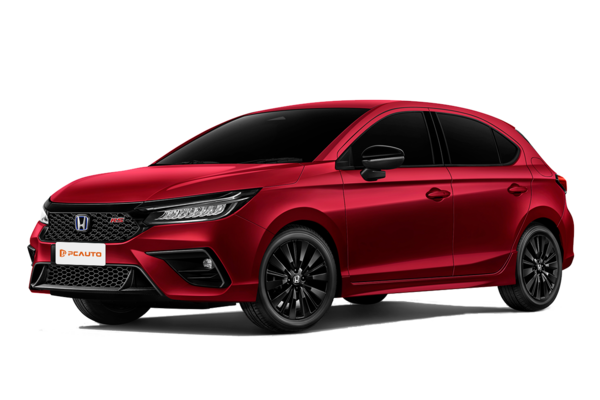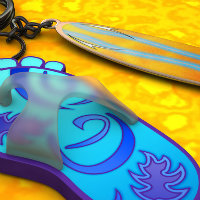Q
what is the difference between toyota alphard and vellfire
The Toyota Alphard and Vellfire are sister models, with their main differences lying in exterior design and market positioning. The Alphard leans into a luxurious, business-oriented vibe, featuring a large chrome grille and understated, elegant lines—perfect for professionals or families who value a premium look. The Vellfire, on the other hand, goes all-in on sportiness, with its split headlights and more aggressive body creases that definitely catch the eye of younger buyers.
In Malaysia, both offer engine options: a 2.5L naturally aspirated and a 3.5L V6, with some trims even packing hybrid powertrains. Inside, you’re looking at high-quality materials and tech like rear-seat entertainment systems across the board. But here’s the split: the Alphard prioritizes plush comfort, while the Vellfire has a slight edge when it comes to driving engagement.
Pricing-wise, the Vellfire usually sits a touch lower, though the exact gap depends on specs. Both are super popular here—ultimately, it comes down to personal taste and what you’ll use it for. Oh, and it’s worth noting these premium Toyota MPVs hold their value really well; if you’re on a budget, checking out certified pre-owned models could save you some cash too.
Special Disclaimer: This content is published by users and does not represent the views or position of PCauto.
Popular Models
Related Q&A
Q
What engine is in a 2014 Holden Colorado?
The 2014 Holden Colorado offered two turbocharged four-cylinder diesel options – a 2.5L unit pushing out 110kW and 350Nm, and a more potent 2.8L variant delivering 147kW and 440Nm. Both engines feature common-rail direct injection, striking a balance between fuel efficiency and strong low-rev torque that's perfect for towing or hauling loads.
Built as a workhorse ute, the Colorado's powertrain prioritizes durability and low maintenance costs. Buyers could choose between a five-speed manual or six-speed auto transmission. These diesel mills really shine when tackling steep inclines or carrying payloads – their torque-rich nature delivers effortless climbing and smooth acceleration. Modern diesel tech also means they're far more refined than old-school oil-burners, with noise and vibration levels approaching petrol-engine smoothness.
Pro tip: Stick to the recommended service intervals (especially diesel filter changes) and always use quality fuel to keep these engines performing at their best.
Q
Is the 2018 Mercedes AMG GT reliable?
The 2018 Mercedes-AMG GT has proven to be fairly reliable overall. Its hand-built 4.0L V8 biturbo engine—tuned by AMG—delivers brutal power while maintaining decent mechanical robustness, with relatively few reported major issues. That said, expect higher running costs than your average commuter car. You'll chew through brakes and tires much faster, and those AMG-specific parts don't come cheap.
The tech suite can be a bit fussy at times—we're talking occasional glitches like infotainment gremlins or false sensor warnings—but most issues are sorted with a software patch or minor fixes. Stick religiously to the factory maintenance schedule using genuine fluids and components, and you'll dodge 90% of potential headaches.
Driving enthusiasts will find the visceral exhaust note and razor-sharp handling worth every penny, though that low-slung front splitter means you'll be dodging potholes like they're landmines. If you're shopping used, prioritize examples with full dealer service history and get a prepurchase inspection focusing on the transmission, suspension, and cooling system—these are the big-ticket items that could ruin your day.
Q
How much is a used Mercedes GLE 2024?
In Malaysia, the price of a used 2024 Mercedes-Benz GLE can vary depending on factors like condition, mileage, specifications, and warranty status. Right now, new models go for around RM500,000 to RM700,000, so used ones are probably in the RM400,000 to RM600,000 range—exact pricing depends on actual availability and market trends. As a luxury SUV, the GLE is popular for its great comfort, advanced tech features, and strong performance. The 2024 model likely comes with the latest MBUX infotainment system and driver assistance functions, making the experience even better. When buying a used GLE, it’s a good idea to go through official certified channels or reputable dealers to make sure the vehicle has been thoroughly inspected and still has warranty coverage. Also, check the maintenance records and accident history to avoid potential issues. Besides that, Malaysia’s used car market is affected by import taxes, exchange rates, and supply and demand, so prices can change anytime. It’s wise to compare options and consult professionals before making a purchase.
Q
What is the most sold Toyota in 2023?
Looking at global and Malaysian market data for 2023, Toyota's top-selling model is the Corolla Cross. This compact SUV has won over plenty of buyers with its versatility, fuel efficiency, and the tried-and-true reliability Toyota is known for. Here in Malaysia, it's a hit because it blends city-friendly agility with just enough off-road capability to handle local road conditions, making it perfect for family needs.
In Southeast Asia, the Corolla Cross comes in both petrol and hybrid variants, and the hybrid is especially popular. Let's face it, with fuel prices being what they are, Malaysians really appreciate the significant fuel savings hybrids deliver – that's a big selling point.
But Toyota's success in Malaysia isn't just about the Corolla Cross itself. They've got a solid after-sales service network, and their vehicles hold their value well on the used car market – two things that matter a lot to local car buyers. Sure, competitors like the Honda HR-V and Mazda CX-30 are strong contenders, but Toyota stays ahead thanks to the trust people have in the brand and generally lower maintenance costs.
Q
How much is Innova Zenix 2023 in Malaysia?
The 2023 Toyota Innova Zenix comes with varying price tags in Malaysia depending on the trim and specs you go for. The base 2.0X starts at around RM 165,000, while the top-spec 2.0V can set you back roughly RM 180,000. Keep in mind, these prices might dip a bit with dealer promotions or if you opt for extra accessories.
As Toyota's main player in Malaysia's MPV segment, the 2023 Innova Zenix gets some solid upgrades – think a snazzier exterior, nicer interior materials, and better tech. Highlights include a bigger touchscreen, advanced driver-assist systems, and a more efficient 2.0L naturally aspirated engine, striking a good balance between family-friendly comfort and practicality.
Malaysian buyers have long loved the Innova Zenix for its reliability, roomy cabin, and strong resale value. It’s especially popular with big families or folks who hit the road for long drives often. If you’re in the market for an MPV, besides checking the price, it’s worth cross-shopping against rivals like the Honda BR-V or Mitsubishi Xpander to find the one that best fits your needs and wallet.
Q
Who makes the most reliable CVT transmission in 2020?
Back in 2020, Toyota and Honda were widely regarded as two of the top brands when it comes to building reliable CVT transmissions, and they've also got a solid reputation in the Malaysian market. Toyota's Direct Shift-CVT really steps up the game by adding a launch gear, which boosts both durability and responsiveness—perfect for zipping around the city. Honda's CVT, on the other hand, is all about that smooth, seamless ride and great fuel economy, which is why you'll find it in popular models like the City and Jazz. Nissan's Xtronic CVT is no slouch either; it's proven to be pretty steady, especially in models like the X-Trail and Almera where it adapts well to different driving conditions.
CVTs are loved for their continuously variable gear ratios, delivering a super smooth drive and better gas mileage. But here's the thing—unlike traditional automatic gearboxes, they need a bit more TLC. Regularly changing the specific CVT fluid is crucial to prevent overheating issues down the line. For Malaysian buyers looking at CVT-equipped cars, it's smart to check out the brand's reputation and how well the model suits local conditions. And don't skip the manufacturer's maintenance recommendations—sticking to those will go a long way in keeping your CVT reliable for years to come.
Q
What size is the LDV T60 2022?
The 2022 LDV T60 is a mid-size pickup truck, measuring 5365mm in length, 1900mm in width, and 1809mm in height, with a wheelbase of 3155mm. This sizeable footprint translates to a roomy cabin for passengers and a practical cargo bed, making it a solid fit for Malaysian users—whether it's for daily commuting or getting those business deliveries done. With a ground clearance of 215mm, the T60 boasts decent off-road capability, easily handling Malaysia's diverse road conditions, be it smooth city tarmac or those rough and tumble rural tracks. Under the hood, you'll find a 2.0-litre turbocharged diesel engine, which serves up plenty of grunt while keeping fuel consumption in check—perfect for those long drives or when you need to haul a heavy load. For Malaysian buyers, when picking a pickup, size and power are important, but so is durability and a reliable after-sales network. The LDV T60 strikes a good balance in these areas, making it a practical choice worth considering.
Q
How much does the Omoda C9 cost?
Over in Malaysia, the Omoda C9 is starting at around RM108,800, though the exact price can vary a bit depending on the trim level you pick and any ongoing promotions. Your best bet is to hit up your local authorized dealer for the latest figures. As a fresh-faced SUV in the market, the C9 is all about that youthful vibe and tech-forward features. Under the hood, you're looking at a 1.5L turbocharged engine pushing out 147 horsepower, paired with a smart infotainment system and some pretty solid advanced driver assistance features – all in all, it’s shaping up to be a pretty competitive package for the money. If you’re a Malaysian shopper, besides keeping an eye on the sticker price, it’s worth checking out the government’s EEV (Energy Efficient Vehicle) tax incentives. Some models that meet the criteria might score you a nice little tax break. Also, before you sign on the dotted line, do yourself a favor and cross-shop with segment rivals like the Proton X70 or Honda HR-V. Figure out which specs matter most for your needs, and definitely don’t skip booking a test drive to get a real feel for how it handles.
Q
How much is Omoda C9 PHEV in Malaysia?
Omoda hasn't officially announced the price tag for the C9 PHEV in Malaysia just yet. But if we look at where Omoda positions itself in the market and check out the current price range of other plug-in hybrid SUVs in the same class – think Proton X90 or Haval H6 HEV – we're probably looking at a ballpark figure between RM120k to RM150k. Of course, we’ll have to wait for the brand to drop the official numbers to be sure.
Billed as an eco-friendly and tech-forward SUV, the Omoda C9 PHEV is expected to pack a 1.5-liter turbocharged engine paired with an electric motor for its plug-in hybrid setup. Word on the street is it might deliver over 50km of pure electric range, which should be more than enough for daily commutes and help keep those fuel bills in check.
Good news for buyers: Malaysia’s government offers import tax breaks and road tax incentives for PHEV models, so you could save even more when you sign on the dotted line. If this Omoda has caught your eye, your best bet is to keep tabs on Omoda Malaysia’s official channels or swing by an authorized showroom for the latest deets. And hey, it never hurts to cross-shop with other PHEV SUVs in the segment – compare specs, after-sales policies, and all that jazz to make sure you’re getting the ride that fits your needs like a glove.
Q
What is the most scrapped car in 2024?
Industry data for 2024 shows Malaysia's most commonly scrapped vehicles are predominantly aging models over 15 years old – think early 2000s economy cars. These workhorses are hitting the scrapyard mainly due to outdated technology, skyrocketing repair bills, and the country's tightening emissions regulations.
Locally assembled classics like the older Proton Saga and Perodua Kancil top the scrap heap, which makes sense given their massive market penetration back in the day and the natural wear-and-tear from years of faithful service. Adding to the scrap pile: some diesel vehicles and older MPVs that can't keep up with the latest emissions standards as the government ramps up its green initiatives.
For owners, letting go of these old-timers isn't just about avoiding wallet-crushing repair costs. Programs like MARP (Malaysia Automotive Rebate Programme) sweeten the deal with new car subsidies, all while doing your part for the environment. Here's the tip: keep a close eye on your car's condition. When maintenance costs start outweighing what the car's actually worth, it's time to consider upgrading to a newer, more fuel-efficient model. You'll get better safety features and ride the wave of eco-friendly motoring – a win-win.
Popular Cars
Model Year
Car Compare
Car Photo
Latest Q&A
Q
How much did a new 2018 beetle cost?
The 2018 Volkswagen Beetle had a starting price range of approximately RM120,000 to RM180,000, depending on the trim and options. The entry-level 1.2 TSI Design model was the most affordable, while the top-spec 2.0 TSI R-Line version approached RM180,000—though final pricing could vary with optional extras and dealer promotions.
As a timeless classic, the 2018 Beetle kept its retro charm but packed modern tech like a touchscreen infotainment system and active safety features. Under the hood, buyers could choose between the fuel-efficient 1.2T or the more spirited 2.0T engine.
Fair warning: Volkswagen discontinued the Beetle in 2019, so you’ll only find it on the used market now. That said, its iconic design and nostalgic appeal still make it a hit among collectors. If you’re eyeing a pre-owned model, always check the vehicle history and maintenance records to snag a solid deal.
Q
What engine does a 2018 VW Beetle have?
The 2018 Volkswagen Beetle offered two gasoline engine options across different markets. The primary powerplant was a 1.2-liter TSI turbocharged inline-four, delivering 105 horsepower and 175 Nm of torque, paired with a 7-speed DSG dual-clutch transmission. This compact forced-induction engine struck a balance between urban fuel efficiency and strong low-end torque.
Higher-spec variants featured an optional 1.4-liter TSI turbocharged unit, bumping output to 150 horsepower. Both engines adopted direct fuel injection and belonged to VW’s widely used EA211 modular family, featuring modern tech like lightweight aluminum blocks.
Though retaining its iconic silhouette, this generation Beetle actually shared its underpinnings with the Golf, inheriting the brand’s proven front-wheel-drive architecture. This platform commonality also translated to easier maintenance, as local dealerships were well-versed in servicing these powertrains thanks to extensive parts sharing across VW’s lineup.
Q
What are the different models of the 2018 VW Beetle?
The 2018 Volkswagen Beetle comes in three main trims: Classic, Trendline, and Sport. All models are powered by a 1.2-liter TSI turbocharged engine delivering 105 horsepower, paired with a 7-speed DSG dual-clutch transmission—perfect for city driving with its nimble handling and solid fuel efficiency.
The entry-level Classic trim rolls on 16-inch wheels and features a basic multimedia system. Stepping up to the Trendline adds 17-inch wheels, fog lights, and chrome accents. The Sport trim leans into its name with 18-inch wheels, a sport-tuned suspension, and unique interior color options.
This generation keeps the Beetle’s iconic retro curves but modernizes them with touches like LED daytime running lights. Inside, you’ll find color-matched dash panels, and with 310 liters of trunk space, it’s more practical than most small cars in its class.
Since the Beetline was discontinued in 2019, the 2018 model stands as the last new generation, making it a rising collector’s item—especially the convertible, which holds strong appeal in the used market. For maintenance, stick to routine service every 15,000 km or 12 months, and regular 95-octane fuel is all it needs.
Q
Does the 2018 Beetle have Apple CarPlay?
The 2018 Volkswagen Beetle did come equipped with Apple CarPlay, integrated into its Composition Media infotainment system. This allowed iPhone users to seamlessly connect for navigation, music, and other apps. The system also supported Android Auto, catering to different smartphone users with its intuitive and responsive interface—definitely a plus for convenience on the road.
That said, some early-production 2018 models might require a software update to activate the feature, so it’s worth checking with an official dealer to confirm your car’s specs or available upgrades. Also, wireless Apple CarPlay wasn’t standard across all trims; it depended on the factory-installed options.
For fans of classic styling who still want modern tech, the Beetle struck a nice balance between retro charm and everyday usability. Competitors like the Mini Cooper offered similar connectivity, but let’s be honest—the Beetle’s iconic design was always its standout feature.
Q
What is the fuel economy of the 2018 Beetle?
The 2018 Volkswagen Beetle's fuel efficiency varies by powertrain. The 1.2L TSI turbocharged version delivers a combined fuel consumption of around 5.5L/100km, while the 1.4L TSI model is slightly thirstier at approximately 6.0L/100km – both perform best with 95-octane petrol.
You'll likely see higher consumption in city driving, but it cruises efficiently on highways thanks to its classic aerodynamic design. For better mileage, stick to routine maintenance like cleaning the air filter and keeping tyres properly inflated. These small habits can help squeeze out extra kilometres per litre.
Though discontinued, the 2018 Beetle remains popular in the used car market – its iconic styling and decent fuel economy make it a practical daily driver. Just remember real-world figures depend heavily on driving style and road conditions, so check owner forums for real-life feedback.
View MoreLatest News

Perodua Traz (B66D) officially launched, priced from RM76,100 to RM81,100
WilliamDec 17, 2025

Xpeng cooperates with EPMB, the third overseas factory established in Malaysia
JohnDec 17, 2025

Proton S70 MC may be equipped with a four-cylinder engine, and the price will be reduced.
MichaelDec 17, 2025

BYD Sealion 5 DM-i officially launches in the Australian market, starting at a price of RM93,000 to capture more market share
AshleyDec 17, 2025

The brand-new Honda Prelude is being sold at a markup in North America. Is this car really that popular?
Kevin WongDec 17, 2025
View More




 Cars
Cars















